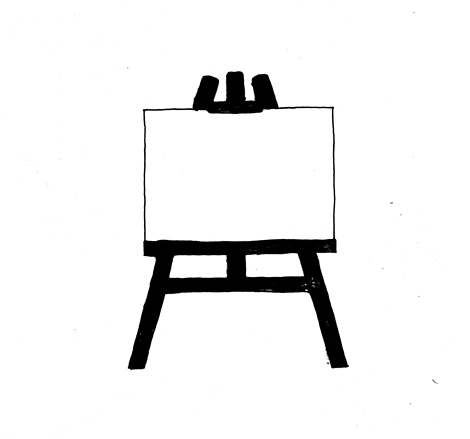<p><em></em><em></em>As lookers and lovers of contemporary art, we too often encounter millennial artists making work as willing (or proud, even) participants in a culture of banality. That is, the isolation and presentation of unoriginal, uninteresting, and insignificant elements of our culture that are “banal” is currently in vogue; no translation, transmutation, commentary, or analysis by the artist required. Texts accompanying such exhibitions and artworks, when intelligible, generally call for the truncation of thought and confusion as crucial components of understanding that which is on view.</p><!–mep-nl–><p><span class=”pullquote”>Buried deep beneath layers of pseudo-intellectual rhetoric, sexy celebrity, and meteoric market appeal, unwieldy self-consciousness masquerades as false bravado, acting as a conduit for excruciatingly lazy art-making. </span>It is everywhere and accessible to brilliant theorists, articulate critics, educated curators, discerning collectors, the unsuspecting public, and everyone in between.</p><!–mep-nl–><p>The obvious scapegoat for the existence of such production is our global fascination with social media, Internet culture, and the speed with which is it possible to consume everything; artworks, and images of artworks included. But living with, thinking about, and experiencing art in a manner hijacked by the fixation of this lightening speed and gluttonous consumption is a choice; not a given.</p><!–mep-nl–><p>It may be argued today, as Michael J. Lewis did earlier this year for <em>Commentary Magazine</em> in “How Art Became Irrelevant,” that the legitimatization of this sort of lazy art-making could render the discipline of art utterly inconsequential. This presents only a simple fallacy; logic and a freshly engaged viewership suggest a different conclusion. For centuries, making anything of worth has required patience, meditation, commitment to both craft and thought, and a deep respect for what has come before.</p><!–mep-nl–><p><span class=”pullquote”>If participating in the culture of banality is to act with indifference and apathy, how can the participant create anything of significance?</span></p><!–mep-nl–><p>There are certainly millennial artists who relish the idea of contemplative art-making, who do not and will not make work created from thoughts that are capped at 140 characters. To waive a white flag and submit to a kind of “if you can’t beat them, join them” mentality is to deny our generation of great contemporary art, and to deny future generations the power to employ works of art to decipher the likeness, complexity, and wildness that is our shared epoch.</p><!–mep-nl–><p><span class=”pullquote”>I am interested in artists who respond to the scourge of cultural indifference by making statements about it, as opposed to participating in it.</span> The artists of my generation read books from start to finish, stare intently at works of art to finely hone skills of observation, have meaningful conversations with each other <em>in person</em>, and spend time in nature. They complain least, make more, and think most. I know, because I represent some of them.</p><!–mep-nl–><p>The easy and meaningless spectacle that can be created around an artist, the immediacy with which we can produce artworks, and the speed with which they can accumulate value in our current market is fleeting. Although it maybe loudest in our hype-machine oriented culture, I hold out hope that the history and legacy of millennials—my generation of artists—will reflect a more significant story.</p><!–mep-nl–><p><em><span style=”color: #999999;”>Adam Moskowitz is a co-owner of Moskowitz Bayse in Hollywood.</span></em></p><!–mep-nl–>


